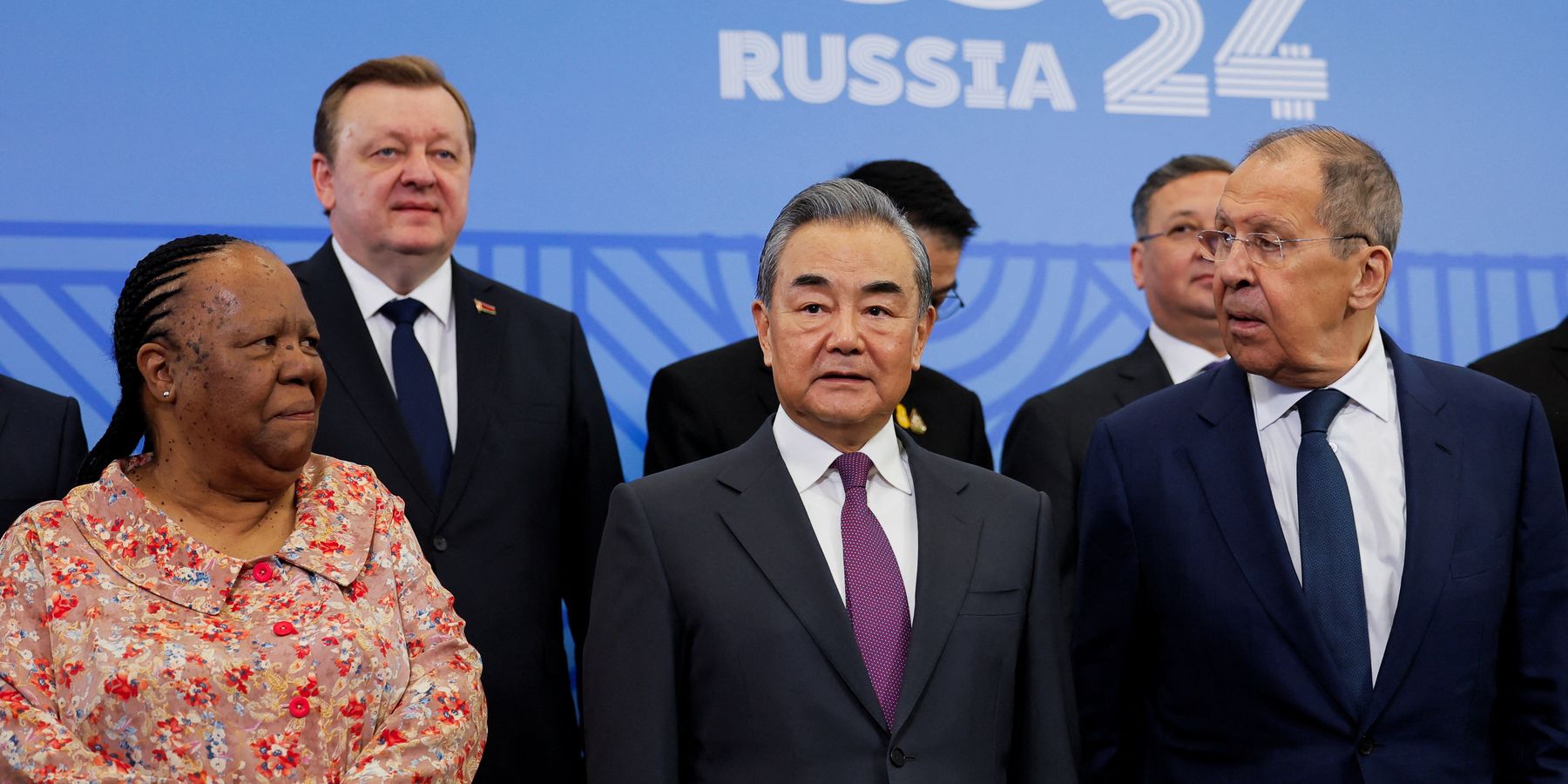During a campaign rally in Wisconsin in September 2024, President-elect Trump said, "Many countries are leaving the dollar. They're not going to leave the dollar with me. I'll say, you leave the dollar, you're not doing business with the United States because we're going to put a 100% tariff on your goods."
He was referring to the BRICS+ countries, many of whom are critical of the "rules-based" international order, established by the U.S. in the Bretton Woods era, which they see as benefitting the West (and specifically the U.S.) over the emerging Global South.
In 2009, Brazil, Russia, India, and China got together to form an informal bloc, called BRIC, at the behest of Russia. South Africa joined the following year, expanding the bloc’s name to BRICS. In addition to geopolitics, the group focuses on increasing economic cooperation and trade among each other. Since 2009, Egypt, Ethiopia, Iran, and the United Arab Emirates (UAE) have joined the group. Forty other countries, including NATO state Turkey, have also expressed interest in becoming members.
Though some scholars describe the group as “sub-imperialist” rather than anti-imperialist, the BRICS+ alliance undoubtedly represents the first meaningful challenge to decades of dollar hegemony, and consequently of the dominance of the U.S. in geopolitics.
At this year's summit in Russia, Putin unveiled his proposal for BRICS Pay, a payment network designed to help countries circumvent the current dollar-based global financial system. Over the years, the U.S. has weaponized the dollar to sanction adversary countries like Cuba, Venezuela, Iran, Afghanistan, North Korea, and China. “The U.S. took weaponization to a new level when it used the dollar payments system to freeze Russia’s access to $300 billion in liquid foreign exchange reserves in the wake of Russia’s invasion of Ukraine in February 2022,” writes economist Robert H. Wade. Ultimately, de-dollarization would help countries like Russia sanction-proof their economies, as RS previously reported.
De-dollarization may not happen anytime soon but the fact that the BRICS+ countries, which form 35% of the world’s GDP and 45% of the world’s population, appear to be taking it seriously, is a real concern for American leaders, including Trump. So, based on his track record and statements, how might a second Trump presidency really impact the BRICS+ alliance?
In his previous presidential term, Trump started a trade war with China (which the Biden administration continued) in addition to unleashing a new torrent of sanctions on Iran, Venezuela, and Russia. If he doubles down on using sanctions as a weapon, more countries will want to hedge their bets. After all, they might also be on the receiving end of sanctions if they were to fall out of favor with the U.S. one day.
“That will mean more consolidation of China's leadership of the BRICS and more innovation in terms of financial infrastructure and cooperation and integration,” predicted Ahmed Aboudouh, associate fellow at London’s Chatham House and head of the China research unit at the Emirates Policy Center, in an interview with RS.
He noted that even Western-friendly countries like Turkey want to join the alliance.
Nonetheless, the process of BRICS’s consolidation and growth will likely evolve slowly because of a number of factors. Trump has made his intent regarding countries wishing to move away from the dollar clear: a barrage of tariffs on their goods. That’s despite the fact that many economists argue that tariffs would “create an enormous headache” for retailers, who would pass those costs on to consumers. As well, a BRICS+ currency would probably serve as an alternative to the dollar in global trade, rather than replacing it altogether.
Moreover, there isn’t necessarily a clear consensus among BRICS+ countries on how exactly to move forward with their proposed initiatives either. And, because de-dollarization is a red line for the Trump administration, Aboudoh says, “A lot of countries will not want to meet the wrath of the United States, meaning Trump will delay the implementation of BRICS Pay and BRICS Bridge. I’m not saying it won’t happen, under Trump, it will take longer to happen.”
On the other hand, Trump is infamous for his desire to challenge the mainstream consensus. Unlike his predecessors, he boasts about his personal relationships with the leaders of “enemy” countries —he spoke of how Xi and he “love each other” and how Xi wrote him a beautiful note after his first assassination attempt this summer. Might his desire to reach out to the other side make him more amenable to going easy on BRICS+ countries?
Aboudoh thinks that’s unlikely. The U.S. under both Trump and Biden has maintained a consistent stance on key BRICS+ countries, notably China and Russia, multiplying sanctions on the latter and imposing more trade restrictions on the former. “I am.…very skeptical about the role of personalities in causing decisive shifts in a given country's foreign policy,” he said.
Of course, it’s impossible to exactly predict U.S. foreign policy toward BRICS+ in the next four years. In fact, it might even be the wrong question to ask.
Unlike the U.S., which has about 4% of the world’s population, the BRICS+ alliance represents almost half the planet. As well, the total output of BRICS+ countries is already larger than the combined output of the U.S. and its G7 allies.
“The biggest reality we now have to face is the end of the American empire,” argued economist Richard Wolff, adding that American politicians across the spectrum are still living in the self-delusion of Washington’s supremacy. When Russia invaded Ukraine, Biden promised that the country would be brought to its knees. The opposite happened: it’s Russia that appears to be winning a devastating war that’s killed thousands of people on both sides.
“The United States’ efforts to stop, block, undercut its competitor China in the past 15 years have failed,” said Wolff. Even if Trump slapped China and other BRICS+ countries with tremendous tariffs, it’s unlikely the West can completely stop the rise of the alliance.
- BRICS just announced an expansion. This is a big deal. ›
- BRICS signals shift from US dominated financial system ›
- BRICS takes aim at Israel as it wades into geopolitical conflicts | Responsible Statecraft ›
















